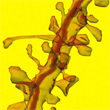Tuesday, 27 May 2014
The Variety and Structural Complexity of Neurons
 The purpose of most of the posts in this blog is to summarize recent studies in the cognitive sciences and attempt to make them more accessible—in particular by providing links to selected pages on this website. But the purpose of some of the other posts is simply to draw attention to existing resources on various aspects of neuroscience. Today’s post falls in the latter category. It deals with the neuron and the work by Kristen Harris and her colleagues to reveal it in all its complexity (see the first two links below).
The purpose of most of the posts in this blog is to summarize recent studies in the cognitive sciences and attempt to make them more accessible—in particular by providing links to selected pages on this website. But the purpose of some of the other posts is simply to draw attention to existing resources on various aspects of neuroscience. Today’s post falls in the latter category. It deals with the neuron and the work by Kristen Harris and her colleagues to reveal it in all its complexity (see the first two links below).
Neurons are like any other cells in the human body, except that they have two special characteristic structures that let them carry out their communication function: long extensions called axons, of which there is typically only one per neuron, and multiple branches called dendrites, which are generally shorter. The combinations of various shapes and sizes of axons and dendrites results in hundreds of types and sub-types of neurons, some of them quite remarkable esthetically. The catalogue of these structures is growing every day, thanks to increasingly sophisticated staining methods.
The shape of any particular neuron is determined largely by its pattern of connections with other neurons, which in turn depends on the function of the neural pathway in question. All of these structures are first laid down while the embryo is developing in utero, and then, after birth, they are shaped continuously by the individual’s interactions with the environment. Those neural pathways that do not get used very much are gradually eliminated, while those that get used a lot strengthen their connections, sometimes even modifying the complex microstructure of the dendritic spines (see the video at the first link below) so that the synaptic contact between two neurons becomes more intimate.
But what is really staggering is not so much the unique, highly complex, three-dimensional sculpture that every neuron represents, but rather that every individual has about 85 billion more of them, hundreds or thousands of which interact with it.
![]() Waltz through hippocampal neuropil
Waltz through hippocampal neuropil
![]() SynapseWeb – Anatomy
SynapseWeb – Anatomy
![]() Neurons: A Curious Collection of Shapes and Sizes
Neurons: A Curious Collection of Shapes and Sizes
From the Simple to the Complex | Comments Closed







